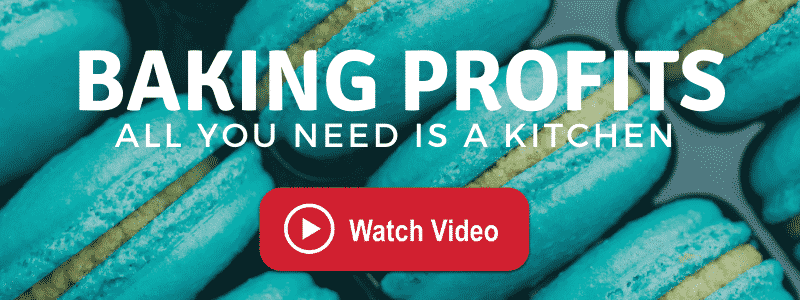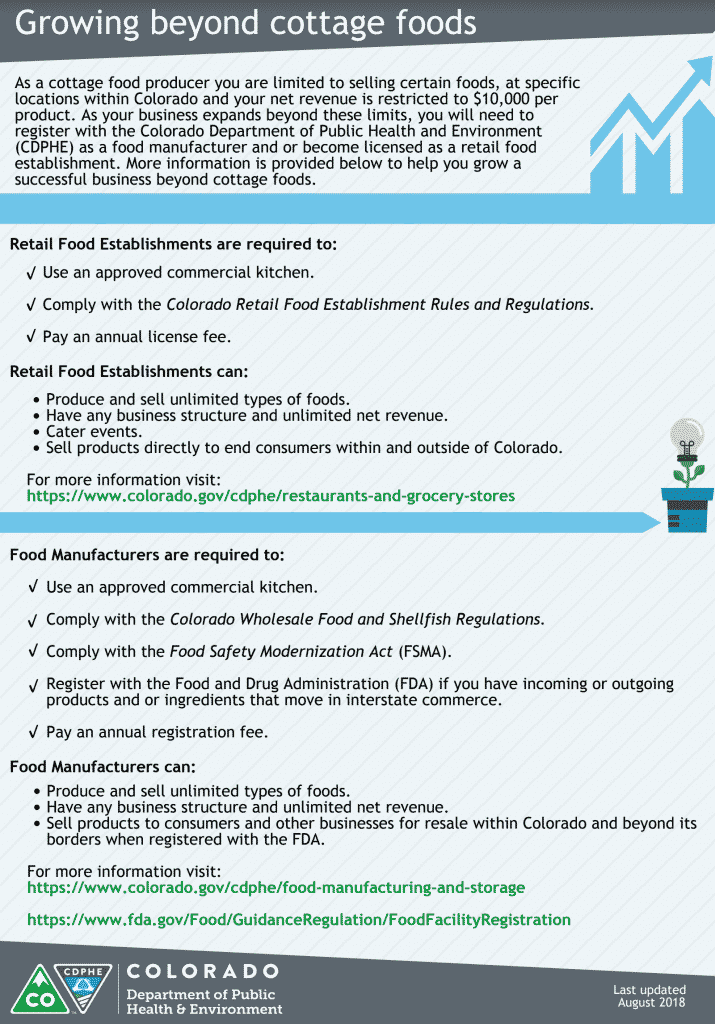Kentucky cottage food laws make it pretty easy to get started quickly and allow a wide selection of foods that you are allowed to make and sell.
Foods that don’t require refrigeration and are generally shelf stable are allowable under the cottage food laws of Kentucky. (see list below)
Kentucky cottage food laws fall under two (2) different types. Home-based “homebased” Processors and MicroProcessors.
We will focus on the home-based here as it includes what most states would consider a cottage food operation and what you are likely to find more useful for your new cottage food business.
For information on microprocessor – please visit this link. MicroProcessors are those growing their own ingredients and foods.
Table of Contents
HOW TO START YOUR COTTAGE FOOD BUSINESS IN KENTUCKY – LICENSING

Kentucky makes it pretty easy to get started and grow your new cottage food business.
COTTAGE FOOD BUSINESS REQUIREMENTS
- Register – fill out this easy form and submit with $50 certification fee
- No food safety certificate required
- Sales limited to $60,000 annually
- Food limited to non TCS (Temperature Control for Safety) only – this is standard across the country as all cottage food operations are limited to non-potentially hazardous / TCS foods.
- Food labels are required
STEPS TO START TODAY
- Review list of non-potentially hazardous foods that are acceptable (below)
- Submit your Kentucky Home-Based Processor Registration Form
- Contact your city / county about a business permit or license (may not be required)
- Review food safety information below
- Start making money!
KENTUCKY COTTAGE FOOD LAW – Foods That Are Allowed
The following is a list of some of the foods allowed under Kentucky’s cottage food laws.
If you do not see an item you want to make – you can reach out to the Kentucky Food Safety Branch, 502-564-7181.
- Dried or freeze dried fruits and vegetables
- Mixed greens
- Fruit jams, jellies, and preserves (this does not include low and/or no sugar varieties and pepper jellies — these must be approved through the UK Microprocessing program)
- Fruit butters
- Sweet sorghum syrup
- Maple syrup
- Breads
- Cookies
- Cakes
- Candy (no alcohol)
- Fruit pies
- Pecan pies
- Dried herbs and spices
- Dried grains
- Nuts
- Granola
- Trail or snack mix
- Popcorn with or without added seasonings
The government uses acidity levels / pH levels to determine a foods safety for sales without refrigeration.
Below you’ll find out how to confirm your foods are safe to be made in your home-based processing business.
Real Life Cottage Food Entrepreneurs and Opportunities
- Cakes – teacher turns kitchen into bakery
- Doughnuts – cottage mini donut vendor
- Fruit jams and jellies – See Additional Requirements Here
- Kettle corn – real kettle corn vendors from home
- Popcorn (plain and flavored) – see a real home vendor here
- Talk and Join hundreds of others here: VendorsUnited.com
- Payshee shared their entire business with us here.
KENTUCKY COTTAGE FOOD LAWS – PROHIBITED FOODS
Common prohibited foods found in other state lists:
- Raw doughs
- Acidified, low acid canned foods
- cured foods
- fermented foods
- juices
- Pickles
- Salsa
- Sauerkraut
- cream filled pastries and breads
- Some of these may be approved through the UK Microprocessing program.
NOTE: Although eggs, milk and dairy products are not allowed, used as ingredients for the allowed foods – is acceptable. Many prohibited foods that are baked or cooked into the allowed foods are rendered harmless (non-TCS) and therefore allowed.
KENTUCKY ANNUAL SALES LIMITS
Kentucky puts an annual cap on the income you can make. Currently this is set at $60,000 annually which is much higher than many states.
Most states that set caps higher like Kentucky do this to inspire and encourage you to grow beyond cottage foods into a wholesale / retail business.
Below is what Colorado created to help cottage food entrepreneurs grow beyond cottage foods.

ACIDITY LEVELS AND TESTING
Most states determine if a food is non-potentially hazardous by the acidity level found in the food. The higher the acidity, the more stable at a range of temps, that food product is.
For example: milk is low acidity and requires temperature controls.
The acidity of foods is measured by pH.
• The range of pH is commonly considered to extend from zero to 14. A pH value of 7 is neutral because pure water has a pH value of exactly 7. Values less than 7 are considered acidic, while those greater than 7 are considered basic or alkaline.
• All fruits are acidic foods and are usually tart and sour. Ex: tomato, lemon, peach, apple, etc.
• The FDA rule for acidic foods states that a food must have a pH below 4.6 to be sold as a minimally processed food.
• The reason for this is bacteria does not grow at this level of acidity.
• The exclusion shall not be construed as allowing the sale of low acid foods (pH > 4.6) in
hermetically sealed containers (i.e. home-canned green beans, peas, etc.) when such
food is not prepared in a permitted establishment.
TESTING
Some states require testing if the pH level is unknown. For many food products, the pH level is already known.
You can test for pH yourself using a pH spear tester. (make sure it is made for food and has a long spear tip).
Oklahoma State University shares an awesome guide for selecting the correct tester for foods and liquids which includes tips and tricks for operation and maintenance. Get The Guide Here.
KENTUCKY COTTAGE FOOD LAW LABELING REQUIREMENTS
KENTUCKY requires all home-based processors to label their food items. Cottage food operators will benefit from the advertising this does for them and it shows your customer you care.
I would never send out anything without a label.
Home-Based Processor Labeling Requirements
The following information shall be included on the label of each food product:
- The common or usual name of the food product.
- The name and address of the home-based processing operation, including the street address, city, state, and zip code.
- The ingredients of the food product. Ingredients shall be in descending order of predominance by weight.
- The net weight or volume of the food product by standard measure or numerical count.
- The following statement in 10-point type: “This product is home-produced and processed.”
- The date the product was processed.
- Allergen identification for all ingredients that contain any of the Major Food Allergens known as The Big 8 Allergens: milk, eggs, wheat, soybean (soy), peanuts, tree nuts, fish, sesame seeds and shellfish.
Using VistaPrint.com or similar – you can quickly create professional labels that not only serve to meet the state cottage food guidelines but also serve for marketing your awesome business and products.
You’ll find some fantastic examples of this from members inside VendorsUnited.com
Kentucky Home-Based Processor Label Example

ALLERGENS ON LABELING
The FDA lists nine (9) major food allergens. Listing any of these on your label is a smart business practice and will certainly help your customers choose a product.
- Milk
- Eggs
- Fish (e.g., bass, flounder, cod)
- Crustacean shellfish (e.g., crab, lobster, shrimp)
- Tree nuts (e.g., almonds, walnuts, pecans)
- Peanuts
- Wheat
- Soybeans
- Sesame seeds
Simply add to your label: “CONTAINS: SOYBEANS” Some go as far to announce that a certain allergen is used in the same kitchen. Some states require you list any potential allergens and potential for any cross contamination even if the allergen is not used in the recipe.
FDA Allergen Labeling Example: Contains Wheat, Milk, Egg, and Soy
WHERE CAN I SELL MY COTTAGE FOOD PRODUCTS
KENTUCKY Cottage Food Laws – Sales Rules
Products can be sold directly to consumers within this state including from the processor’s home by pick-up or delivery, a farmer’s market, a roadside stand, fairs, festivals, community events or online.
Home-based processors cannot sell products to restaurants, grocery stores, wholesale distributors, or any retail outlet for further sale.
Inside kitchenincome.com you can find out how many cottage food entrepreneurs are getting sales faster than they can make the food.
FOOD HANDLER TRAINING AND BEST PRACTICES
KENTUCKY cottage food law does NOT require you take a food safety and handling course. However, knowing the safe handling practices will protect you and your customers.
There are many short courses you can take online and actually get certified and be able to share that with your customers.
Many of our VendorsUnited.com members are proud to display their food safety certificates as a way to insure their customers that they care. This helps your business.
- Short courses that provide food handling and safety certification
- Free info from the FDA – food safety
SAFE PRACTICES
Much of this may seem like common sense, but even if you already know, it’s a good idea to remind yourself with a list of things that can prevent you from missing something small.
And if for no other reason… CYA! CYA = Cover Your A#%
CLEAN WORK AREA / WORK SPACE / SANITIZATION
Providing safe to eat foods from your kitchen – starts in your kitchen.
Keep your area clean and sanitized to avoid cross contamination and to insure you provide your customers and clients with the safest and best foods they can get.
The following are some “common” sense things you can do to insure the best environment for preparing foods to sell:
- Keep all equipment and surface areas clean and sanitized
- Make sure window and door screens are bug proof with no gaps
- Keep ingredients separate to prevent cross contamination / e.g. raw eggs near flour
- No pets in work area and preferably none in the home
- Allow no-one with a cold, sniffles or sick in kitchen while preparing foods
- Wipe down walls and clean floors daily
- Use good lighting to avoid missing unclean areas
- Keep window and door screens in good repair to keep insects out
- Wash hands frequently while working and use food grade gloves for extra safety
- Keep areas of food storage and equipment storage clean and sanitized
RECORD KEEPING
Why keep these types of records?
Let’s say the inspector calls you and says they got a report that your banana bread, someone purchased, made them sick.
You’ll be able to show that you didn’t even make banana bread that week and that the person who reported you, bought that 4 weeks ago and you weren’t even the one that sold it to him.
This does not need to be complicated. I love my yellow legal pads and they make an inexpensive tool for keeping up with the following:
- The recipes you use including ingredients
- The process you use to prepare that specific recipe: (can be just like recipe instructions)
- Date made (can be coded for your own use only if your state doesn’t require the production date) e.g. Made 12.22.29 = 292212
- Date sold (you can have a batch code to help track a certain batch) Simply write down date you sold an item
- Location sold is another great piece of information to keep track of
- Sales receipts are something great to keep for a couple of reasons and over at KitchenIncome.com I dive into the best practices, best systems and best methods for tracking, managing, selling and shipping.
COTTAGE FOOD lIABILITY INSURANCE
We live in a society that likes to sue. I can sue you for wearing that color shirt. No kidding! Of course I probably won’t win, but at the very least, it’s gonna cause you stress and some costs.
Liability insurance is a MUST.
It can be expensive – but several years ago, I found FLIP and by far, they gave me the most protection (coverage) and allow you to run your cottage food business without fear of being sued.
WHY? Because they provide the lawyers. And their lawyers… they are good.
Of course you should price shop around with your local agent or a national brand company, but rest assured, I’ve done all the legwork for you.
Alternatively, some folks opt to get bonded. You’ve heard the saying before: “licensed and bonded”. A bond is usually provided from an insurance bonding company or your own insurance company.
My first time, I got a bond at State Farm.
A bond is expensive comparatively but is less out of pocket in the beginning. Of course, it’s way, way less insurance / coverage too.
A $10,000 bond may cost $50 annually while a $2,000,000.00 liability policy may cost a few hundred a year.
No matter what you decide… knowing you’re insured against frivolous lawsuits is worth every penny.
KENTUCKY COTTAGE FOOD LAWS IMPORTANT LINKS
- Kentucky Cottage Food Laws – Download
- Kentucky Home-based Processor Rules and Restrictions
- Kentucky Home-based Processor Registration Form
- University of Kentucky Home-based Processor and Microprocessor Information and Outline
- Kentucky Labeling Requirements for Home-based Processors
KENTUCKY COTTAGE FOOD CONTACT INFO
Kentucky Food Safety Division
275 E. Main St. HS1CF
Frankfort, KY 40621
502-564-7181
[email protected]
UPDATES TO KENTUCKY COTTAGE FOOD LAWS
From time to time, links, info, rules and numbers change, are updated or made obsolete.
Although I spend time daily with hundreds of vendors (many of which are cottage food businesses) – I can miss an update.
If you find a broken link or outdated state information… please let me know and I’ll send you a special thank you for helping me maintain the best site on the internet for the cottage food industry.
My goal has always been to have a central place that is absolutely free for those starting out or existing entrepreneurs who use their homes and kitchens to make real incomes.
Please send to [email protected] / or post inside the private VendorsUnited.com group.
Need more resources? Check it out HERE (Helpful Resources)
Take a peek at the best vendors on the planet, the community that rocks the food vending world: Vendors United…

Disclaimer
This information is provided to help those interested in starting a cottage food business. It is not a document made by the state government. This information is not provided as law nor should be construed as law. Always use the contact information for each state to confirm compliance and any changes.
Did we help you? Help us to share this information…
 WATCH VIDEO!
WATCH VIDEO! WATCH VIDEO!
WATCH VIDEO!
Very useful and informative. Thanks.